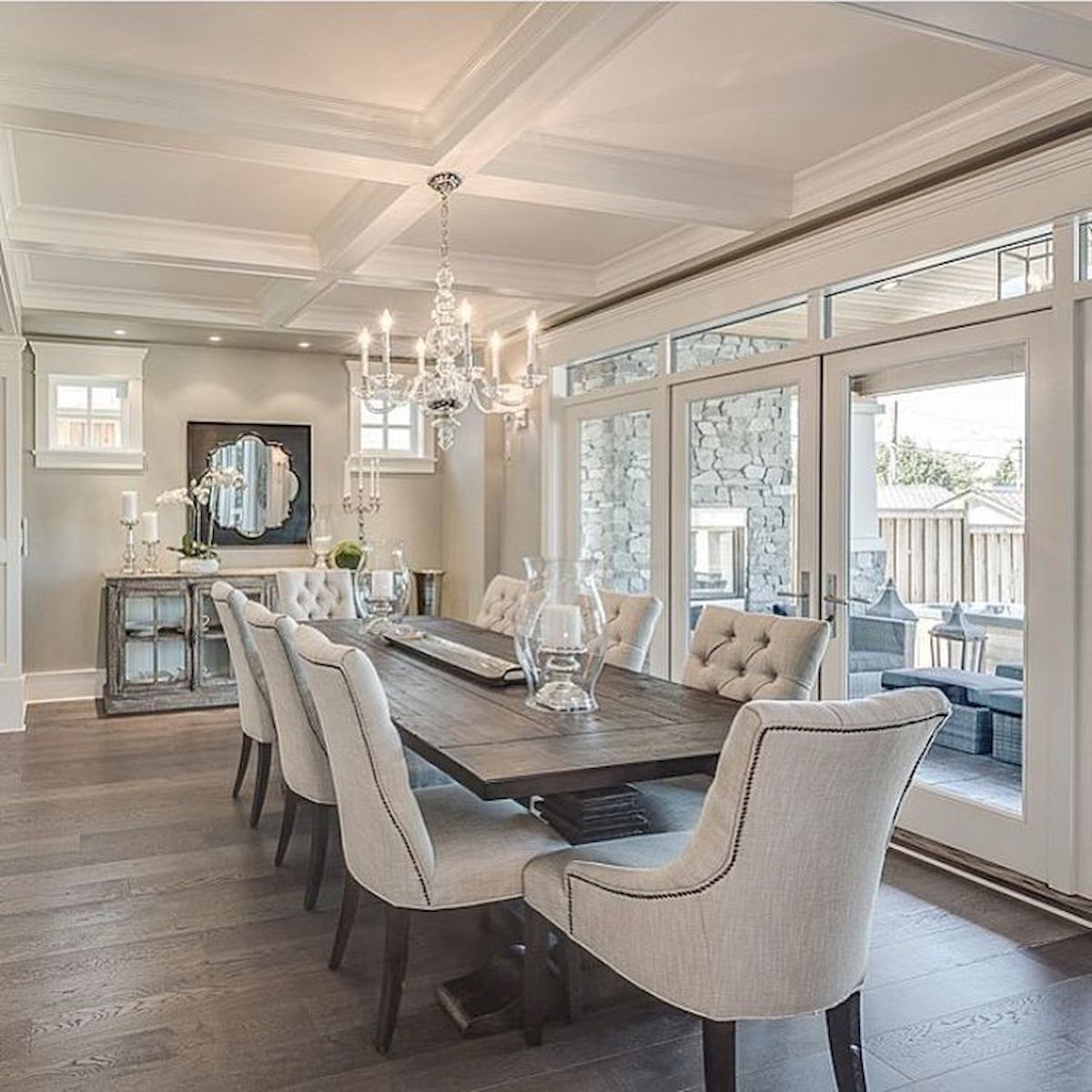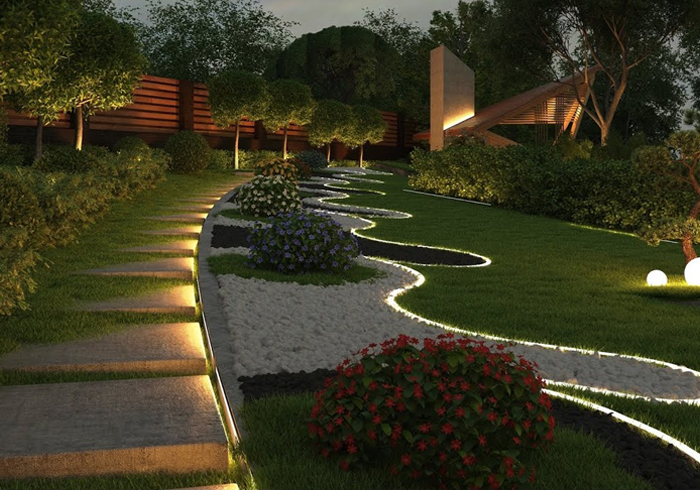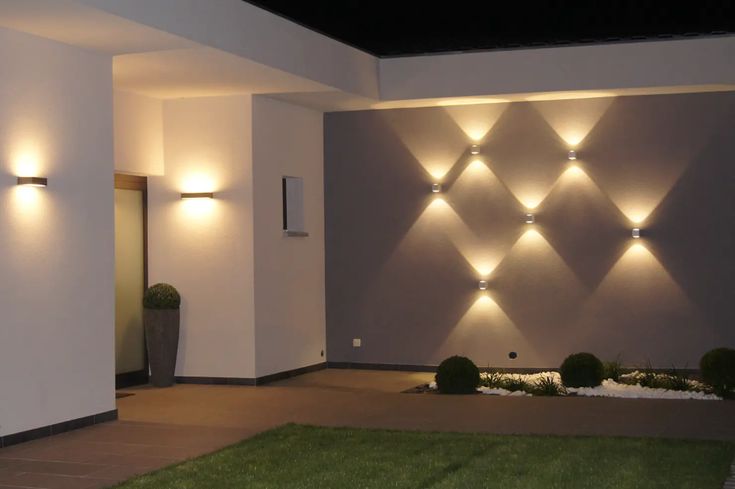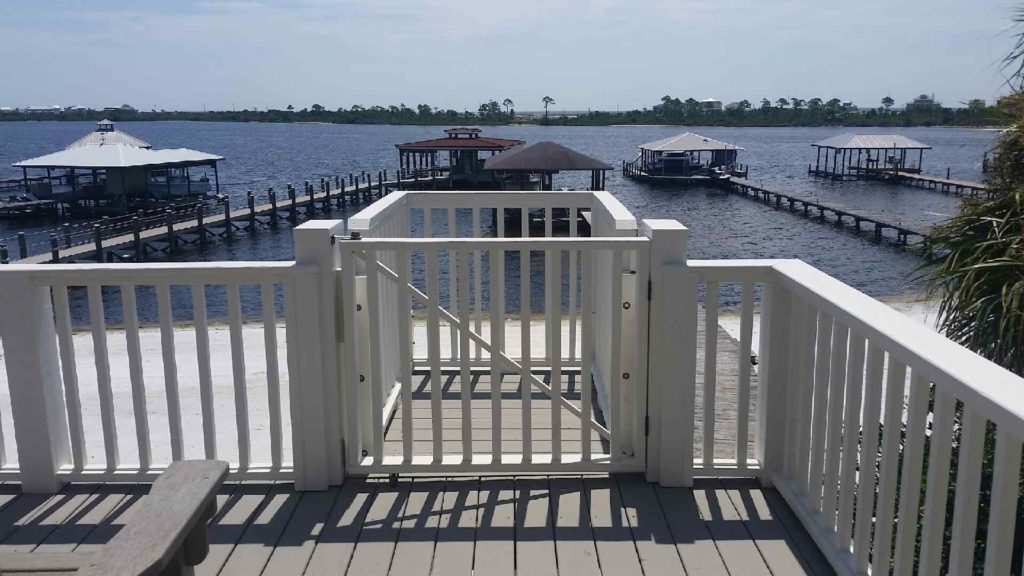Creating a welcoming atmosphere with outdoor lighting design transforms ordinary spaces into inviting havens. This involves more than just illuminating a path; it’s about carefully selecting fixtures, colors, and placement to evoke specific moods and enhance the beauty of your outdoor environment. We’ll explore how different lighting types, from subtle path lights to dramatic spotlights, contribute to a warm and inviting ambiance, considering factors like energy efficiency and smart lighting integration.
Ultimately, we aim to guide you through designing an outdoor space that is both functional and aesthetically pleasing.
This exploration delves into the art of outdoor lighting, examining various lighting styles and their impact on creating a welcoming atmosphere. We’ll cover the practical aspects of design, including fixture selection, placement strategies, and the integration of natural elements. Furthermore, we’ll discuss the advantages of smart lighting systems and automation for increased convenience and energy savings. Through detailed examples and practical tips, this guide empowers you to transform your outdoor space into a truly inviting and enjoyable area.
Defining a Welcoming Atmosphere
Creating a welcoming outdoor space involves a thoughtful blend of design elements that foster a sense of comfort, relaxation, and security. It’s about crafting an environment where people feel instantly at ease and encouraged to linger. Lighting plays a pivotal role in achieving this ambiance, transforming the space from merely functional to truly inviting.Lighting can significantly enhance the key elements of a welcoming outdoor space.
By strategically placing light sources, we can highlight architectural features, create visual interest in pathways and landscaping, and establish a clear sense of boundaries, thereby enhancing safety and security. Subtle illumination can also mask potentially unappealing aspects of the environment, directing attention towards more desirable features.
Color Palettes and Lighting Styles for Warmth and Comfort
The choice of color and lighting style significantly impacts the overall mood. Warm, inviting atmospheres are often achieved through the use of soft, diffused lighting. Think of warm white or amber tones, reminiscent of candlelight or a cozy fireplace. These colors evoke feelings of comfort and security, particularly in the evening hours. In contrast, cooler light tones, such as bright white or bluish hues, can feel sterile or even harsh, potentially detracting from the welcoming atmosphere.
For instance, using warm-toned pathway lighting can guide guests safely and subtly, while uplighting trees with a warm amber glow creates a magical and inviting backdrop. Similarly, strategically placed spotlights highlighting architectural details in a warm white light can add a touch of elegance without overwhelming the space. Consider the use of low-voltage landscape lighting to subtly illuminate plants and pathways, creating a soft, inviting glow without harsh shadows.
This approach minimizes light pollution and enhances the overall ambiance. Alternatively, string lights with warm-toned bulbs can provide a whimsical, festive touch, ideal for patios or gardens.
Types of Outdoor Lighting
Choosing the right outdoor lighting is crucial for creating a welcoming atmosphere. Different fixtures offer unique benefits and drawbacks, impacting both the ambiance and energy efficiency of your outdoor space. Understanding these differences allows for a tailored approach to illuminating your home’s exterior, maximizing both aesthetic appeal and practicality.
Creating a welcoming outdoor atmosphere starts with thoughtful lighting design; warm, inviting hues can transform any space. If you’re live-streaming the unveiling of your new lighting scheme, however, remember to check your internet connection beforehand to avoid any issues – refer to this helpful guide on how to fix lag and buffering during mobile live streams to ensure a smooth broadcast.
Once you’ve addressed potential technical glitches, you can focus on showcasing your beautiful, welcoming outdoor lighting.
Several types of outdoor lighting fixtures contribute to a welcoming environment. Each possesses distinct characteristics influencing its suitability for specific applications and design goals.
Path Lights
Path lights, typically low-voltage fixtures embedded in the ground, gently illuminate walkways and garden paths. Their soft, diffused light provides safety and guidance while enhancing the overall aesthetic. Advantages include increased safety at night, improved curb appeal by highlighting pathways, and the creation of a warm, inviting atmosphere. Disadvantages include potential tripping hazards if not properly installed and maintained, and a limited range of illumination, making them less effective for larger areas.
Spotlights
Spotlights, as the name suggests, provide focused illumination on specific features, such as trees, sculptures, or architectural details. Their directed light creates dramatic highlights, drawing attention to focal points and adding depth to the landscape. Advantages include highlighting architectural features or landscaping elements, creating visual interest and drama, and providing effective security lighting. Disadvantages include potential for glare if improperly positioned, and a less diffused, potentially harsh, light source if not carefully selected and aimed.
String Lights
String lights, versatile and decorative, offer a whimsical and festive ambiance. Their warm glow creates a cozy and inviting atmosphere, particularly effective in patios, decks, or around trees. Advantages include ease of installation and customization, creating a relaxed and festive atmosphere, and offering a cost-effective lighting solution. Disadvantages include limited light output compared to other options, and the potential for damage from weather exposure if not properly protected.
Lanterns
Lanterns, ranging from traditional gas-powered to modern solar-powered designs, provide a classic and elegant touch. They offer a warm, inviting glow, adding character and charm to outdoor spaces. Advantages include their aesthetic appeal, creating a classic and elegant atmosphere, and offering varied styles to suit different design aesthetics. Disadvantages include potential for higher maintenance (especially with gas lanterns), and limited light output compared to other brighter options.
Energy Efficiency Comparisons, Creating a welcoming atmosphere with outdoor lighting design
The energy efficiency of different lighting technologies significantly impacts both the environmental impact and running costs of outdoor lighting.
A comparison of LED, incandescent, and solar technologies reveals distinct advantages and disadvantages concerning energy consumption and environmental impact. The table below summarizes key differences.
| Technology | Energy Efficiency | Lifespan | Environmental Impact | Cost |
|---|---|---|---|---|
| LED | High (longest lifespan) | Very long (25,000+ hours) | Low (minimal mercury content) | Higher initial cost, lower running cost |
| Incandescent | Low | Short (1,000 hours) | High (energy consumption and short lifespan) | Lower initial cost, higher running cost |
| Solar | Moderate (dependent on sunlight) | Moderate (dependent on battery life) | Low (renewable energy source) | Moderate initial cost, very low running cost |
Lighting Placement and Design Strategies
Effective outdoor lighting design goes beyond simply illuminating a space; it’s about crafting an atmosphere. Careful consideration of placement and design strategies is crucial for achieving the desired ambiance and functionality. This section will explore practical approaches to lighting placement, focusing on creating inviting outdoor spaces and safe walkways.
Small Patio Lighting Plan: Cozy and Inviting
Creating a cozy patio involves a layered approach to lighting. Imagine a small patio, perhaps 10ft x 10ft. We’ll start with ambient lighting to establish a general illumination level. This could be achieved with two low-hanging pendant lights, positioned centrally, emitting a warm, soft white light (around 2700K color temperature). These pendants provide a general glow, preventing harsh shadows.
Next, we introduce accent lighting to highlight architectural features or plants. Small, strategically placed spotlights could uplight a climbing plant against the patio wall, drawing the eye upwards and adding visual interest. Finally, task lighting addresses functionality. Path lights along the patio edge ensure safe navigation, while small table lamps provide adequate light for dining or socializing.
This layered approach combines ambiance with practicality, creating a truly inviting space.
Comparative Effects of Different Lighting Angles
The angle from which light is emitted significantly impacts the perceived atmosphere. Different angles create distinct moods and highlight different aspects of the space.
Creating a welcoming atmosphere with outdoor lighting design involves careful consideration of ambiance and functionality. For instance, strategically placed lights can highlight architectural features, while also providing a safe and secure environment. If you’re planning a fundraising event, consider using a reliable live-streaming platform; you might find a suitable option by checking out resources like this guide on finding a safe and trustworthy live streaming app with donation features: mencari aplikasi live streaming dengan fitur donasi yang aman dan terpercaya.
Ultimately, the right lighting enhances the overall experience, creating a memorable and inviting space.
| Lighting Angle | Effect on Atmosphere | Example Fixture | Suitable Location |
|---|---|---|---|
| Uplighting | Creates drama and height, adding a sense of mystery and elegance. Can make a space feel larger and more dynamic. | Spotlights directed upwards towards trees, walls, or architectural features. | Highlighting architectural details, trees, or plants; creating a dramatic effect on walls. |
| Downlighting | Provides a sense of security and clarity, ideal for walkways and functional areas. Can feel sterile if not balanced with other lighting types. | Recessed lights in the ground or ceiling fixtures. | Illuminating walkways, patios, or seating areas; providing general illumination. |
| Sidelighting | Creates depth and texture, highlighting the contours of objects and adding visual interest. Can be used to create shadows and a more intimate feel. | Wall-mounted sconces, path lights, or bollard lights. | Accentuating architectural features, highlighting pathways, or creating a warm glow along walls. |
Illuminating Walkways and Pathways Safely and Attractively
Safe and attractive walkway illumination requires careful planning. Avoid harsh, direct light which can create glare and shadows. Instead, opt for soft, diffused lighting. Path lights, spaced evenly along the walkway, are a popular and effective choice. Consider using low-voltage LED path lights for energy efficiency and safety.
For added safety, ensure the lights are positioned to illuminate the path clearly, preventing tripping hazards. Incorporating different heights and styles of path lights can add visual interest, making the walkway more engaging than just a functional route. For example, a combination of shorter bollard lights and taller, decorative path lights can create a visually appealing and safe pathway.
Remember to consider the overall aesthetic of the space and choose fixtures that complement the existing design.
Incorporating Natural Elements
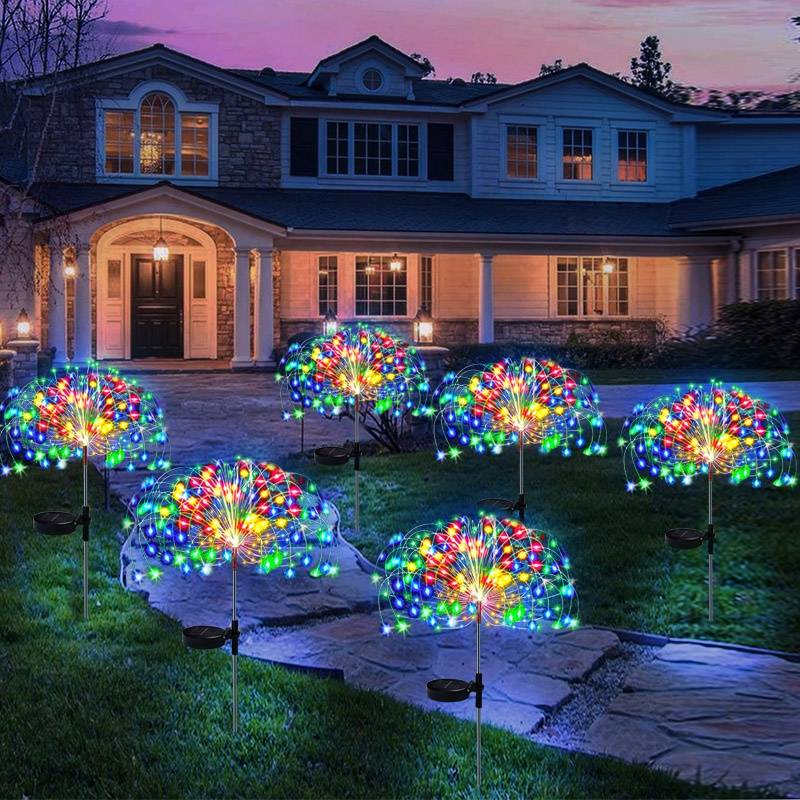
Source: susercontent.com
Harmoniously integrating outdoor lighting with your existing landscape is key to creating a truly welcoming and aesthetically pleasing outdoor space. By thoughtfully considering the natural elements already present, you can enhance their beauty and create a cohesive design that feels both intentional and organic. This approach moves beyond simple illumination to create a captivating interplay of light and nature.The strategic use of lighting can dramatically transform the perception of your garden, highlighting its best features and subtly concealing less desirable ones.
Careful consideration of light color, placement, and intensity allows you to create a dynamic and engaging atmosphere, showcasing the unique character of your landscape.
Highlighting Natural Features with Light Color
Different light colors evoke distinct moods and can be used to emphasize specific plants or architectural elements within your landscape. Warm white or amber lighting, for instance, can create a cozy and inviting ambiance, particularly effective when highlighting flowering plants or pathways. Cooler white or even blue lighting, on the other hand, can provide a more modern and dramatic effect, ideal for accentuating water features or architectural details like stone walls.
Consider using warmer tones near seating areas to encourage relaxation and cooler tones to highlight architectural features or taller plants. For example, uplighting a mature oak tree with a warm white light will highlight its texture and form, creating a focal point in the garden. Conversely, using cool blue lighting to subtly illuminate a cascading water feature will create a serene and tranquil atmosphere.
Shadow Play and Light Layering for Depth
Mastering the art of shadow play and light layering is crucial for adding depth and visual interest to your outdoor lighting design. By strategically placing lights to create both illuminated areas and shadowed recesses, you can add texture and dimension to your landscape. Layering involves using multiple light sources with varying intensities to achieve a more complex and nuanced effect.
For example, using path lighting to illuminate walkways creates a sense of guidance and safety, while uplighting trees adds height and drama. Simultaneously, strategically placed spotlights can highlight specific plant specimens or architectural features, while recessed lighting can provide ambient illumination. This layered approach prevents harsh shadows and creates a more sophisticated and visually engaging outdoor environment. Consider a situation where a large oak tree dominates a garden.
Uplighting its trunk and branches with a warm white light creates a dramatic effect, while simultaneously using softer, diffused light from lower-level spotlights illuminates the surrounding flowerbeds, creating a balanced and harmonious effect.
Integrating Lighting with Existing Landscaping
Effective integration of lighting with existing landscaping requires a careful assessment of the existing plants, trees, and water features. Consider the size, shape, and texture of plants when choosing lighting fixtures and placement. For example, delicate flowering plants may benefit from soft, diffused lighting, while larger shrubs or trees may be effectively highlighted with uplighting or spotlights. Water features can be dramatically enhanced with underwater lighting or strategically placed lights along their edges, creating shimmering reflections and dynamic visual effects.
For instance, planting a border of low-growing shrubs near a pathway and illuminating them with low-voltage path lights can create a welcoming and visually appealing entrance. Similarly, highlighting a pond or fountain with underwater lights can transform the space into a magical and serene environment at night.
Smart Lighting and Automation
Smart lighting systems offer a significant upgrade to traditional outdoor lighting, providing enhanced control, energy efficiency, and improved safety and security features. By integrating technology into your landscape lighting, you can create a truly personalized and responsive outdoor environment.Smart lighting systems use connected devices and apps to allow for remote control and automation of your outdoor lights. This offers several key advantages beyond simply turning lights on and off.
Energy Efficiency Through Smart Lighting
Smart lighting significantly reduces energy consumption compared to traditional systems. This is achieved through features like automated scheduling, which ensures lights are only on when needed, and the use of energy-efficient LED bulbs. For example, a homeowner could program their lights to automatically turn off at sunrise, eliminating wasted energy during daylight hours. Motion sensors can also further optimize energy use by only illuminating areas when movement is detected.
These features, combined with the inherent energy efficiency of LED technology, can lead to substantial savings on electricity bills over time, potentially reducing energy costs by 50% or more depending on usage patterns.
Enhanced Safety and Security with Automated Lighting Schedules
Automated lighting schedules contribute to a safer and more secure outdoor environment. Pre-programmed timers can simulate occupancy, deterring potential intruders by creating the illusion that someone is home even when the house is empty. This is particularly effective during evenings and overnight hours. Furthermore, motion-activated lights provide immediate illumination when movement is detected, alerting homeowners to potential threats and deterring unwanted activity.
Consider a scenario where a motion sensor detects movement near the back door at night; the lights instantly illuminate the area, potentially scaring off an intruder and alerting the homeowner to the activity.
Creating Customized Lighting Scenes for Different Occasions
Smart lighting allows for the creation of diverse lighting scenes tailored to specific occasions. For instance, a “dinner party” scene might involve brighter, warmer lighting to create a convivial atmosphere, while a “relaxing evening” scene could utilize dimmer, cooler lights for a more tranquil ambiance. These scenes can be easily programmed and accessed through a smartphone app, allowing for effortless adjustments to the ambiance of your outdoor space.
Imagine setting a romantic “date night” scene with strategically placed spotlights highlighting specific landscape features, or a vibrant “celebration” scene with bright, colorful lighting for a festive gathering. The possibilities are as diverse as your needs and preferences.
Illustrative Examples
Let’s explore how welcoming outdoor lighting can transform different home styles, demonstrating the versatility and impact of thoughtful design. These examples showcase various approaches to fixture selection, placement, and color palettes to achieve a warm and inviting ambiance.
Modern Home Outdoor Lighting Design
This design for a modern home emphasizes clean lines and minimalist aesthetics. The exterior is predominantly white with dark grey accents. We’ll use a combination of recessed lighting and linear fixtures to highlight architectural features and create a layered lighting effect. Recessed LED lights, subtly integrated into the eaves, provide soft, ambient illumination across the façade. Linear LED strip lights, positioned along the base of the house, subtly illuminate pathways and ground-level features.
For accent lighting, sleek, cylindrical bollard lights in a brushed aluminum finish will line the driveway, providing a clear and safe pathway. The color scheme will predominantly feature cool white LEDs (around 4000K) for the recessed and linear lighting, creating a contemporary feel, while the bollard lights will utilize a slightly warmer white (around 3000K) to provide a welcoming glow at ground level.
Creating a welcoming atmosphere with outdoor lighting design involves careful consideration of ambiance and functionality. For instance, strategically placed path lights can guide guests safely, while uplighting trees adds a touch of magic. If you’re looking for ways to supplement your income while enhancing your home’s aesthetic, consider exploring options like those detailed on this website: aplikasi live streaming terbaik untuk penghasilan tambahan tanpa modal.
Once you’ve secured extra funds, you can invest in even more sophisticated outdoor lighting features to truly transform your space.
This contrast subtly highlights architectural features while maintaining a cohesive, modern look.
Rustic Cabin Outdoor Lighting Design
This rustic cabin design prioritizes a warm and inviting atmosphere using natural materials and warm lighting. The exterior features exposed timber beams and stonework. We’ll leverage this natural beauty by using outdoor wall sconces crafted from wrought iron with seeded glass shades. These fixtures, positioned strategically near the entrance and along walkways, will cast a soft, warm glow (around 2700K).
Pathway lighting will consist of low-voltage LED path lights with a rustic finish, mimicking the appearance of traditional lanterns. To further enhance the natural ambiance, we’ll incorporate solar-powered string lights draped across the porch and patio areas, creating a magical, inviting atmosphere in the evenings. The warm, amber light emitted by these fixtures will complement the natural materials, creating a cozy and inviting ambiance.
The overall effect will be a charming and welcoming space that feels both rustic and sophisticated.
Pool Area Outdoor Lighting Design
Safety and aesthetic appeal are paramount in pool area lighting. This design incorporates both functional and decorative elements. Underwater LED lights, installed within the pool itself, will provide a captivating and colorful ambiance, offering various color-changing options for different moods. However, it’s crucial these lights are low-voltage and fully waterproof, meeting stringent safety standards to prevent electrical hazards.
Around the pool deck, we’ll use recessed pathway lighting to provide safe and well-lit walkways, preventing accidents. These lights will use a warm white light (around 3000K) to create a welcoming and relaxing atmosphere. Additionally, strategically placed landscape lighting will highlight surrounding plants and trees, adding depth and visual interest to the space while ensuring visibility. The combination of underwater and surrounding lighting will create a visually stunning and safe environment, perfect for evening relaxation and entertainment.
All electrical fixtures must adhere to relevant safety codes and regulations for outdoor pool environments.
Last Word: Creating A Welcoming Atmosphere With Outdoor Lighting Design
By thoughtfully considering lighting type, placement, color, and integration with natural elements, you can create an outdoor space that exudes warmth and welcome. Whether you prefer the soft glow of string lights or the dramatic effect of spotlights, the key lies in a well-planned design that enhances the existing architecture and landscaping. Remember, the goal is not just to illuminate, but to create an atmosphere that invites relaxation, socializing, and enjoyment of the outdoors.
Embracing smart lighting solutions further optimizes energy efficiency and convenience, ensuring your outdoor space remains a welcoming and enjoyable retreat for years to come.
Clarifying Questions
What is the best color temperature for outdoor lighting to create a welcoming atmosphere?
Warm white (2700-3000K) generally creates the most welcoming atmosphere. Cooler temperatures can feel harsh or sterile.
How do I prevent light pollution from my outdoor lighting?
Use shielded fixtures that direct light downwards, avoiding upward spill. Choose lower wattages where appropriate and consider motion sensors to minimize unnecessary illumination.
What are some affordable options for outdoor lighting?
Solar-powered lights are often budget-friendly and require minimal installation. String lights and LED pathway lights are also relatively inexpensive.
How often should I replace my outdoor light bulbs?
LED bulbs last much longer than incandescent or halogen bulbs, but you should still check them regularly for damage or dimming. Replace as needed, typically every few years for LEDs.
Can I use outdoor lighting to improve home security?
Yes, motion-sensor lights deter intruders and provide illumination in case of emergencies. Strategically placed lights can also highlight vulnerable areas.
- Minimalist Glass Design A Deep Dive - June 2, 2025
- Rainwater Harvesting House A Sustainable Home - May 6, 2025
- Natural Ventilation HouseA Sustainable Choice - May 6, 2025

